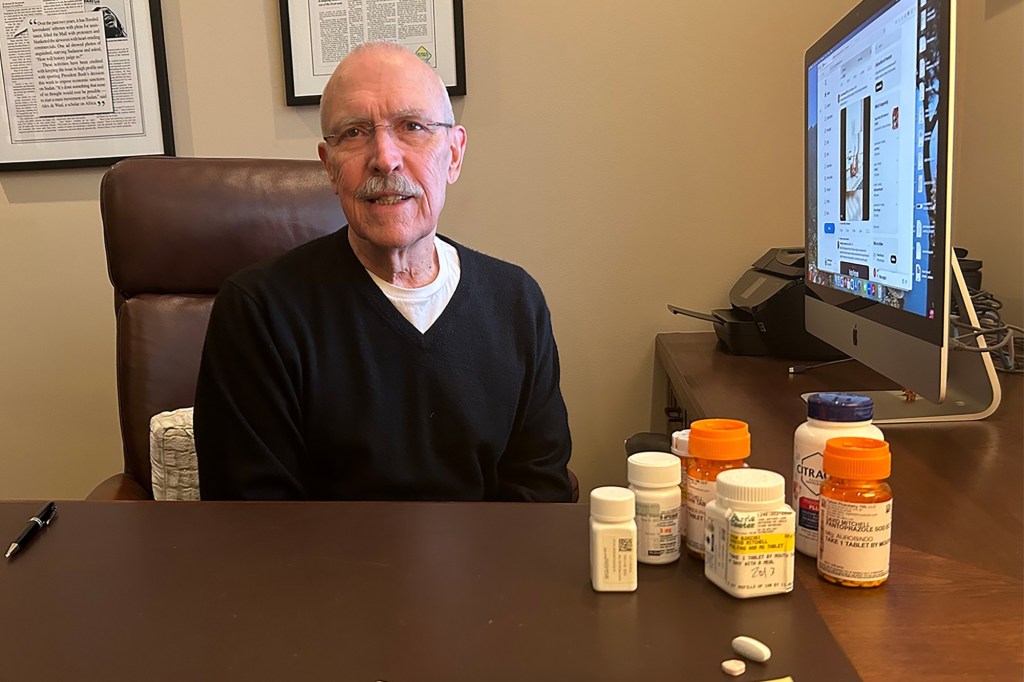Last year alone, David Mitchell paid $16,525 for 12 little bottles of Pomalyst, one of the pricey medications that treat his multiple myeloma, a blood cancer he was diagnosed with in 2010.
The drugs have kept his cancer at bay. But their rapidly increasing costs so infuriated Mitchell that he was inspired to create an advocacy movement.
Patients for Affordable Drugs, which he founded in 2016, was instrumental in getting drug price reforms into the 2022 Inflation Reduction Act. Those changes are kicking in now, and Mitchell, 73, is an early beneficiary.
In January, he plunked down $3,308 for a Pomalyst refill “and that’s it,” he said. Under the law, he has no further responsibility for his drug costs this year — a savings of more than $13,000.
The law caps out-of-pocket spending on brand-name drugs for Medicare beneficiaries at about $3,500 in 2024. The patient cap for all drugs drops to $2,000 next year.
“From a selfish perspective, I feel great about it,” he said. But the payment cap will be “truly life-changing” for hundreds of thousands of other Medicare patients, Mitchell said.
President Joe Biden’s battle against high drug prices is mostly embodied in the IRA, as the law is known — a grab bag of measures intended to give Medicare patients immediate relief and, in the long term, to impose government controls on what pharmaceutical companies charge for their products. The law represents the most significant overhaul for the U.S. drug marketplace in decades.
With Election Day on the horizon, the president is trying to make sure voters know who was responsible. This month, the White House began a campaign to get the word out to seniors.
“The days where Americans pay two to three times what they pay for prescription drugs in other countries are ending,” Biden said in a Feb. 1 statement.
KFF polling indicates Biden has work to do. Just a quarter of adults were aware that the IRA includes…
Read the full article here







